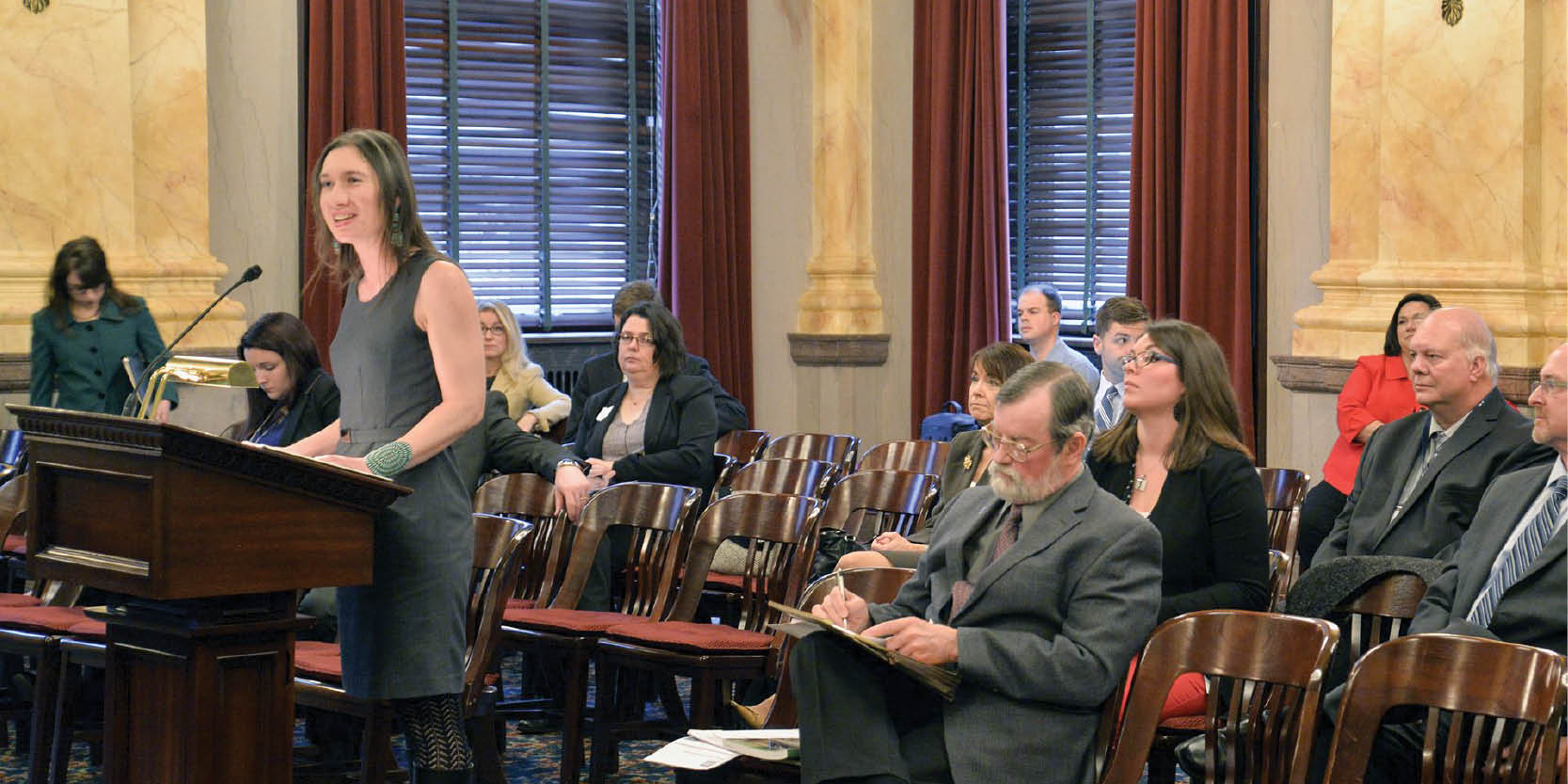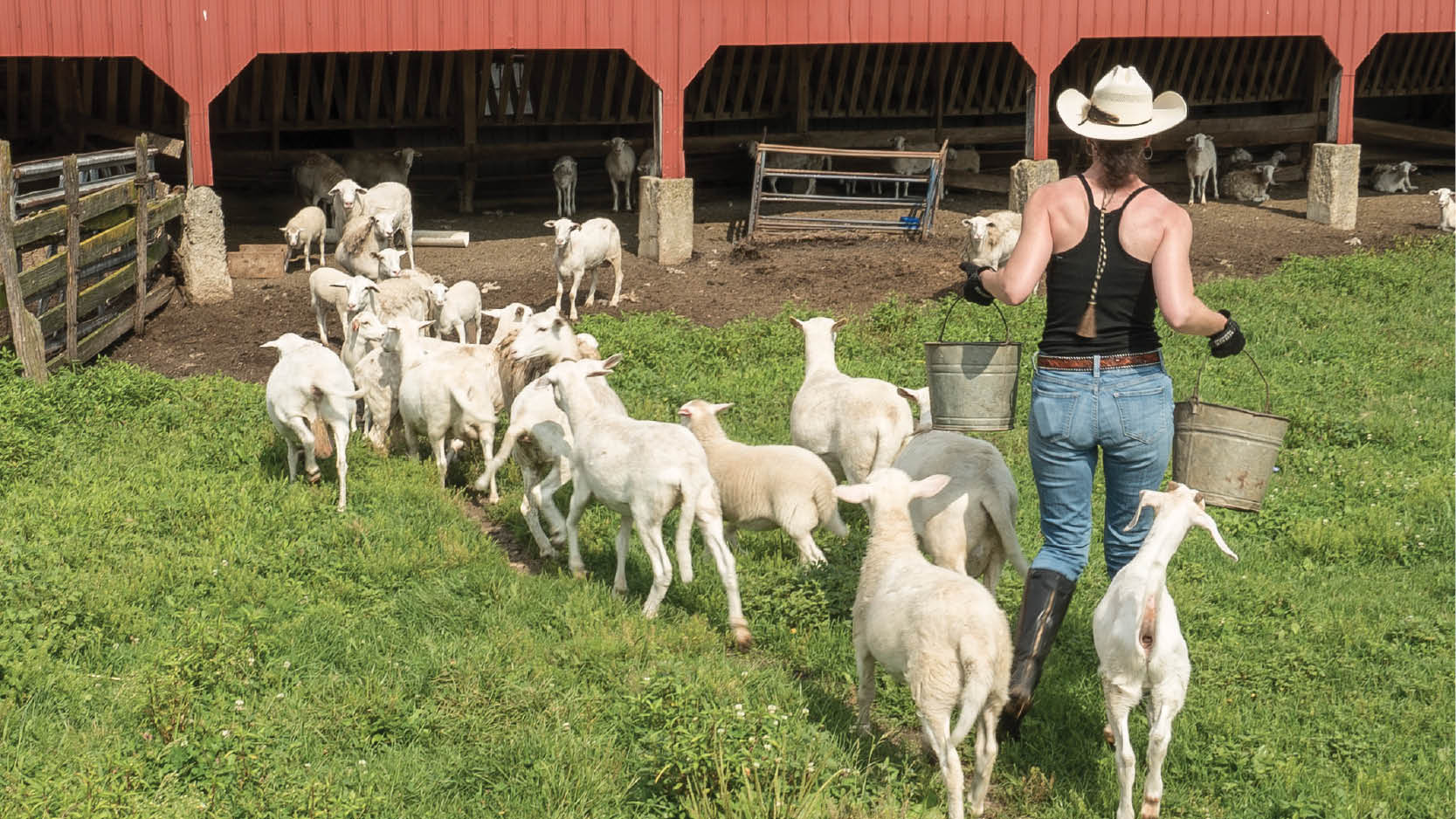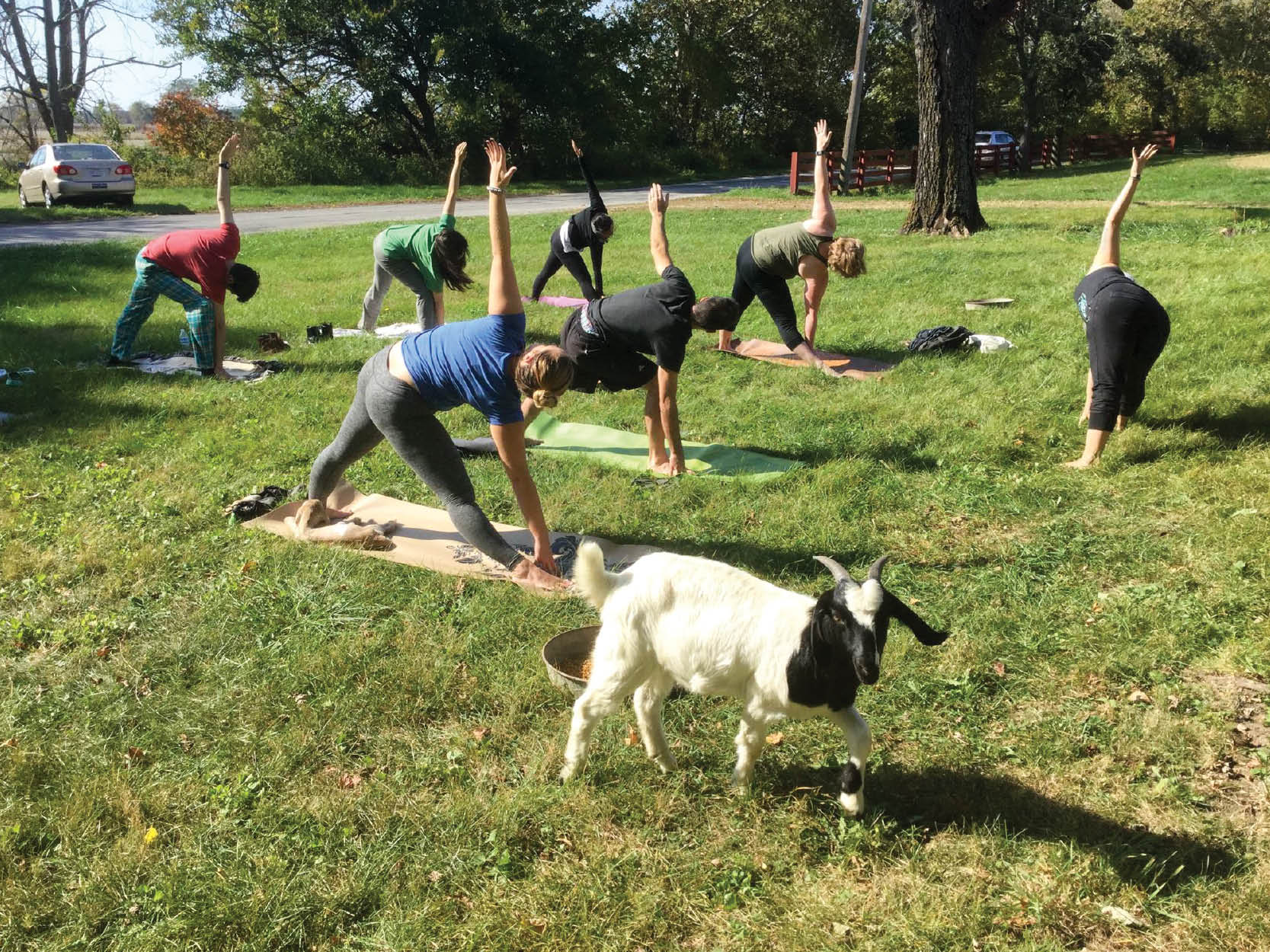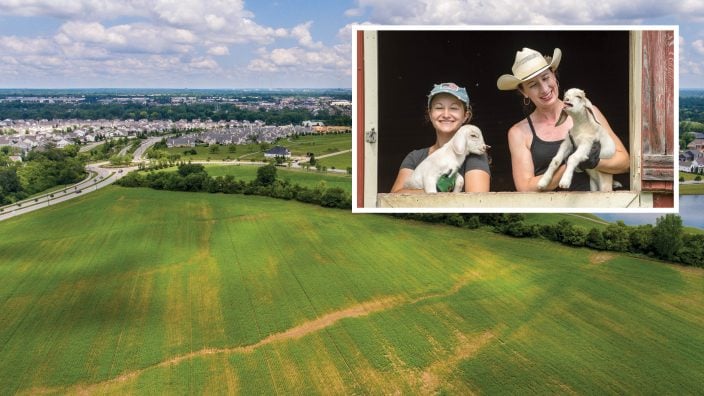Applications for Ohio Farm Bureau Health Plans now available
Members have three ways to apply: contacting a certified agent, calling 833-468-4280 or visiting ohiofarmbureauhealthplans.org.
Read MoreFor more than 40 years CAUV has been preserving farms, but this year it was time for an update.
Katherine Harrison smiled as she looked out over her small livestock farm on the fringes of Canal Winchester and Groveport in Franklin County.
“I think I might do chores later,” she said with a little laugh on a recent soggy day as her 76 acres were pounded by an incessant mid-summer rainstorm.
Those chores include taking care of dozens of very free-range chickens (they like to hop up on the patio furniture in the back of the farm house) and about 80 goats that are part of the family at the Harrison homestead. That family also includes 40 sheep, a donkey, 10 farm cats and two dogs.
This small, family farm is precious to Harrison, who also serves as an Ohio Farm Bureau state board member. She grew up on the farm and fought for it when it looked like it was going to be taken away. She recently repurchased the portion she currently lives and works on and is the fifth generation to do so. Keeping a working farm functioning, especially in this urban area near Columbus, takes copious amounts of hard work and determination to make a go of it.
“There’s a financial value and an emotional value,” Harrison said. “We will continue to face development pressure, but I view it as an opportunity.”
Harrison has a vision of using her farm as a destination where she can connect people with agriculture. “These 76 acres are my heart and soul,” she said. “If I succeed or if I fail, it is on me. I’ve staked my entire future on this farm. I think (my path) is the best way to honor this farm, but it’s got to pay the bills.”
When slim profits are sucked up by property taxes, earning income from a farm anywhere becomes even more difficult. And in the last several years it has been difficult for farmers statewide to keep up with their property tax bills. Current Agricultural Use Value or CAUV, a program that for years has served Ohioans as intended by preserving farmland, was in need of an update.
Because of the work of Farm Bureau members and staff, some relief is on the way. After several years of effort, a fairer CAUV formula was approved in the state budget signed into law by Gov. John Kasich in June.
Save Our Space: The history of CAUV
Ohio Farm Bureau was on the front lines in 1973 when CAUV was first established. Because farming depends on owning or leasing hundreds or even thousands of acres of land, property taxes have historically been of primary concern for farmers. When development drastically drives up property values and the resulting tax valuations, then tax bills can easily exceed profits on the balance sheet.

The tipping point came through a series of Ohio Supreme Court cases in the ‘60s and ‘70s that defined how property had to be taxed in conformance with the Ohio Constitution, including a ruling that all land had to be taxed at its “highest and best use,” or the value it would sell for development purposes versus its value as farmland. Faced with increasing urban encroachment into the countryside, farmers worried development and the resulting higher property taxes would drive them out of business. In 1973, Farm Bureau led the way with its Save Our Space campaign to amend Ohio’s constitution. The campaign was successful and Current Agricultural Use Value was approved by voters.
“CAUV was established to keep land in agriculture and to reduce the development pressure on farms,” said Leah Curtis, Ohio Farm Bureau Federation policy counsel. “Having open space and a domestic food supply is important to everyone in the country. Agriculture is the backbone of Ohio’s economy.”
Taxes go up, crop prices go down
For years the CAUV taxation formula worked well. But a perfect storm began brewing in 2008 that put the formula out of whack. The CAUV formula uses a combination of factors, including crop prices, soil types and capitalization rate (the cost to borrow money). The good news of higher-than-normal crop prices in the early 2000s became bad news when crop prices plunged starting in 2013 just as tax bills were coming due. In addition, the Federal Reserve’s policy keeping interest rates low to stimulate the economy meant that the CAUV formula was really out of sync with the reality of the farm economy. Statewide, Ohio farmers saw a 307 percent increase in property taxes charged between 2008 and 2014. Those higher taxes were being paid at a time when some farm crop prices had fallen as much as 50 percent.

That was the crux of the issue for farmers, according to Ohio Farm Bureau State Board member Roger Baker, who has a 1,000-acre crop, hay and beef cow operation in Wayne County. He told The Columbus Dispatch in May that farmers were not looking for a tax break or a government handout in corrective legislation.
“All we’re asking for is for the equation to get a little more real time and real numbers to today’s economy and the environment that we’re working in,” he told the newspaper. “The ag economy started to slide, and then all of the sudden the taxes started exploding. They exploded to a level that I don’t think they’ve ever seen and I don’t think anyone dreamed.”
The reform legislation ensured that financial market data used in the calculation was actually tied to the farm economy and what happens on farms, rather than the general financial markets. Farm Bureau asked for an increase in holding assumptions from five years to 25 years, as most farms are passed down in a family and are owned and operated for more than five years. Additionally, Farm Bureau asked that equity assumptions, previously based on the general federal interest rate, should instead be based on farm-specific equity data from the U.S. Department of Agriculture.
It is estimated that these changes, coupled with previous Farm Bureau-led reforms, will result in average savings of 30 percent for 2017 reassessments. The reforms are phased-in over two reassessment cycles – six years – in order to assist local communities and schools as they transition to the more accurate CAUV formula.

Finally, the reforms remove the penalty on farmers who place land in conservation practices that protect water quality.
Harrison notes that as far as making ends meet, farmers don’t have a lot of options. Some work off-farm jobs, but that doesn’t work for everyone, making the original intent of CAUV — keeping farmland as farmland — even more important.
“Once a farm is sold, it’s sold,” she said, “and that changes the fabric of the whole community.”
Conservation: Encouraged through new CAUV changes
The CAUV changes signed into law included a key provision focusing on conservation and, in turn, water quality. Previously, farmers were discouraged from idling land for conservation because it was taxed as though it is producing crops. Now, CAUV land used for year-round conservation practices, or enrolled in a federal land retirement or conservation program for at least three years, will be valued at the lowest of the values assigned on the basis of soil type.
Farm Bureau believes taxing conservation lands at the CAUV minimum value is appropriate because those lands are non-producing.
“Since Ohio’s farmers are committed to being great stewards of the land and environment, working to remove the tax penalty for placing land in conservation was important for our members,” said Jenna Beadle, OFBF director of state policy. “Farmers are trying to do the right thing and our tax policy should be supportive of their efforts.”
Photos by Neal Lauron
Feautured Image: Harrison, right, with intern Julia Garleb holding baby goats Kacy and Natalie. Harrison works with Ohio State University to provide hands-on internships to students interested in farming and agriculture.


Members have three ways to apply: contacting a certified agent, calling 833-468-4280 or visiting ohiofarmbureauhealthplans.org.
Read More

One of the best decisions Shannon and Heather Utter made a few years ago was looking into a Farm Bureau member benefit that has ended up saving them thousands of dollars on their energy bills.
Read More

Ryan Hiser has experienced first-hand the importance of having the opportunity to vote on issues that will affect his family operation and other farmers.
Read More

Bill Patterson, Cy Prettyman and Adele Flynn will continue to serve as officers for Ohio Farm Bureau Federation.
Read More

Delegates discussed many topics impacting agriculture including farmland preservation, local foods, and succession planning.
Read More

Twenty-six farmers govern the state’s largest farm and food organization.
Read More

The 2025 recipients are Fred Cooke (posthumous) of Richland County, Marvin Dietsch of Williams County, Steven Knollman of Hamilton County and Michele Miller (posthumous) of Ottawa County.
Read More

Nathan and Jill Parriman grow seasonal crops, including Christmas trees, pumpkins and cut flowers, providing U-cut experiences that invite customers to engage directly with agriculture.
Read More

The 2025 Distinguished Service Award recipients are Craig Adams, Mike Townsley, and Kellogg Farms, Kurt Farms and Stateler Family Farms.
Read More

Ohio Farm Bureau Treasurer Adele Flynn participated in the meeting, representing Ohio farmers.
Read More